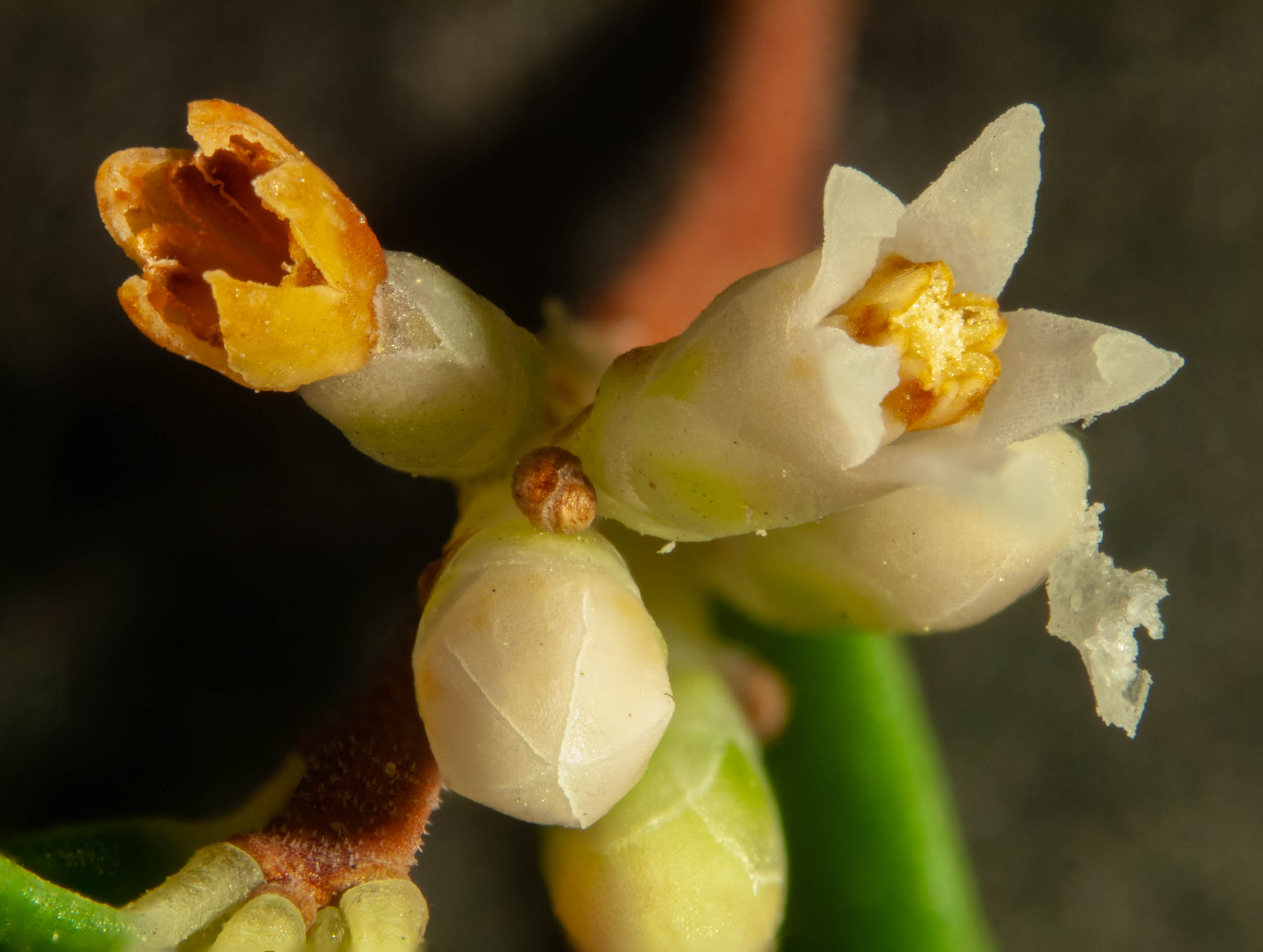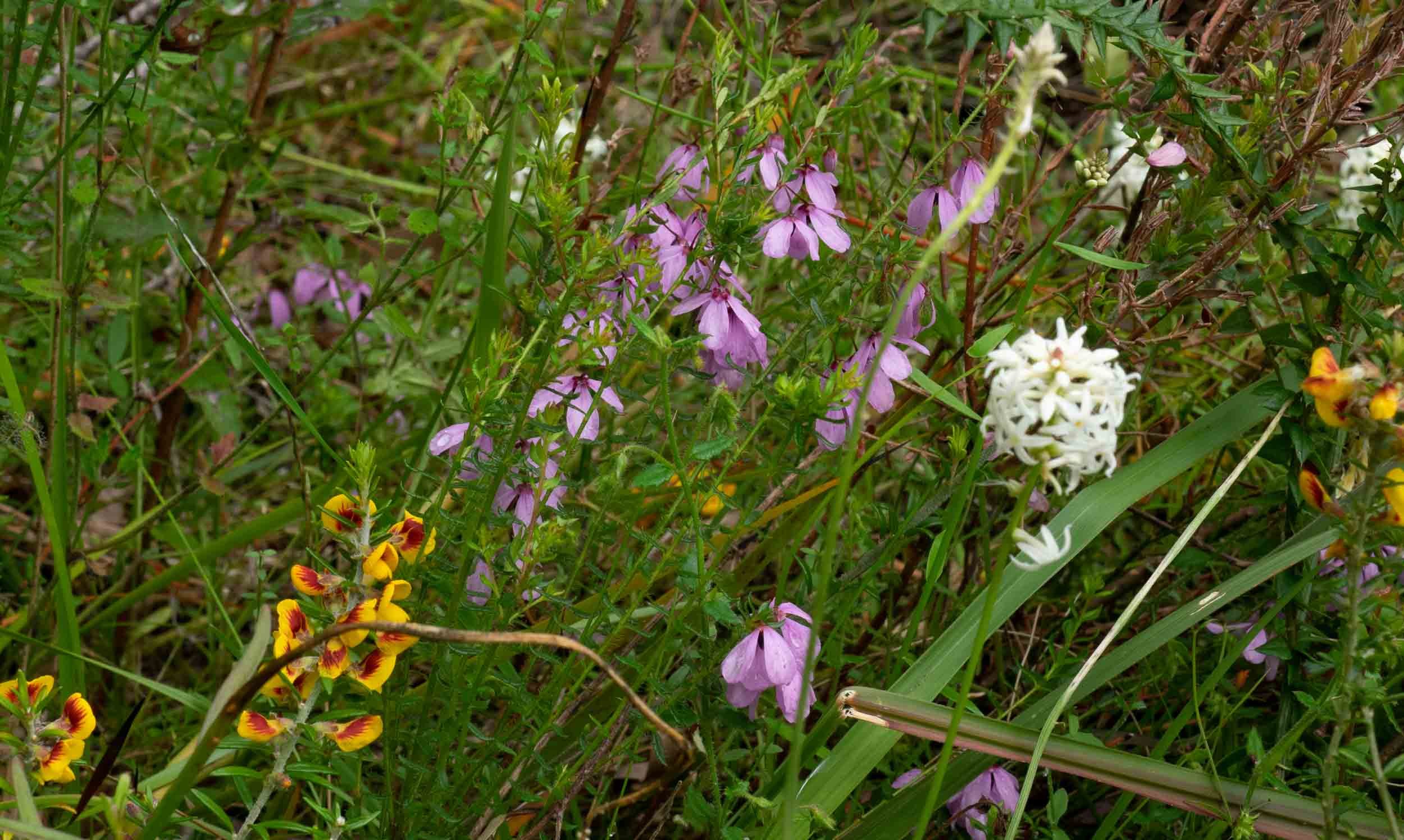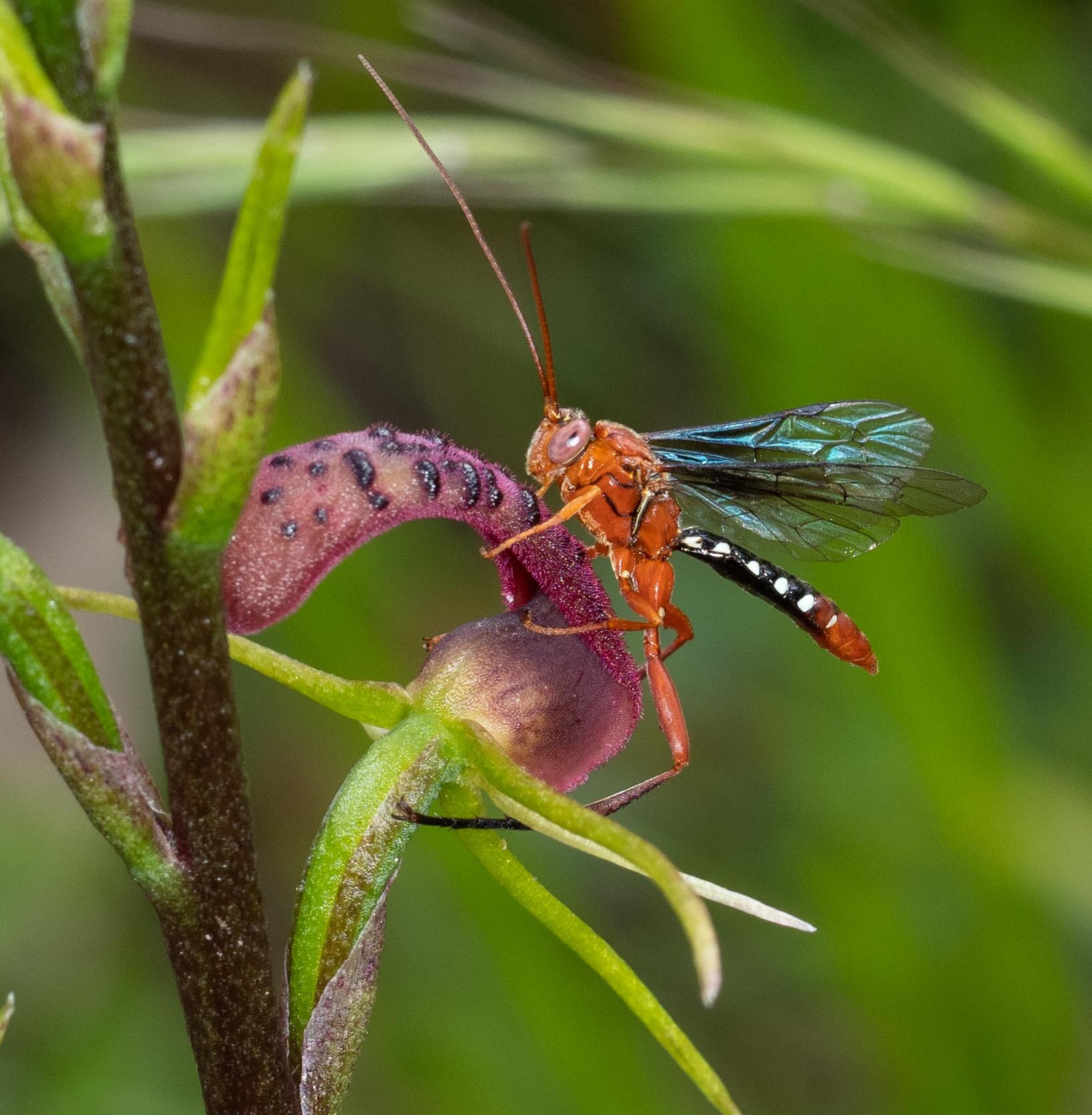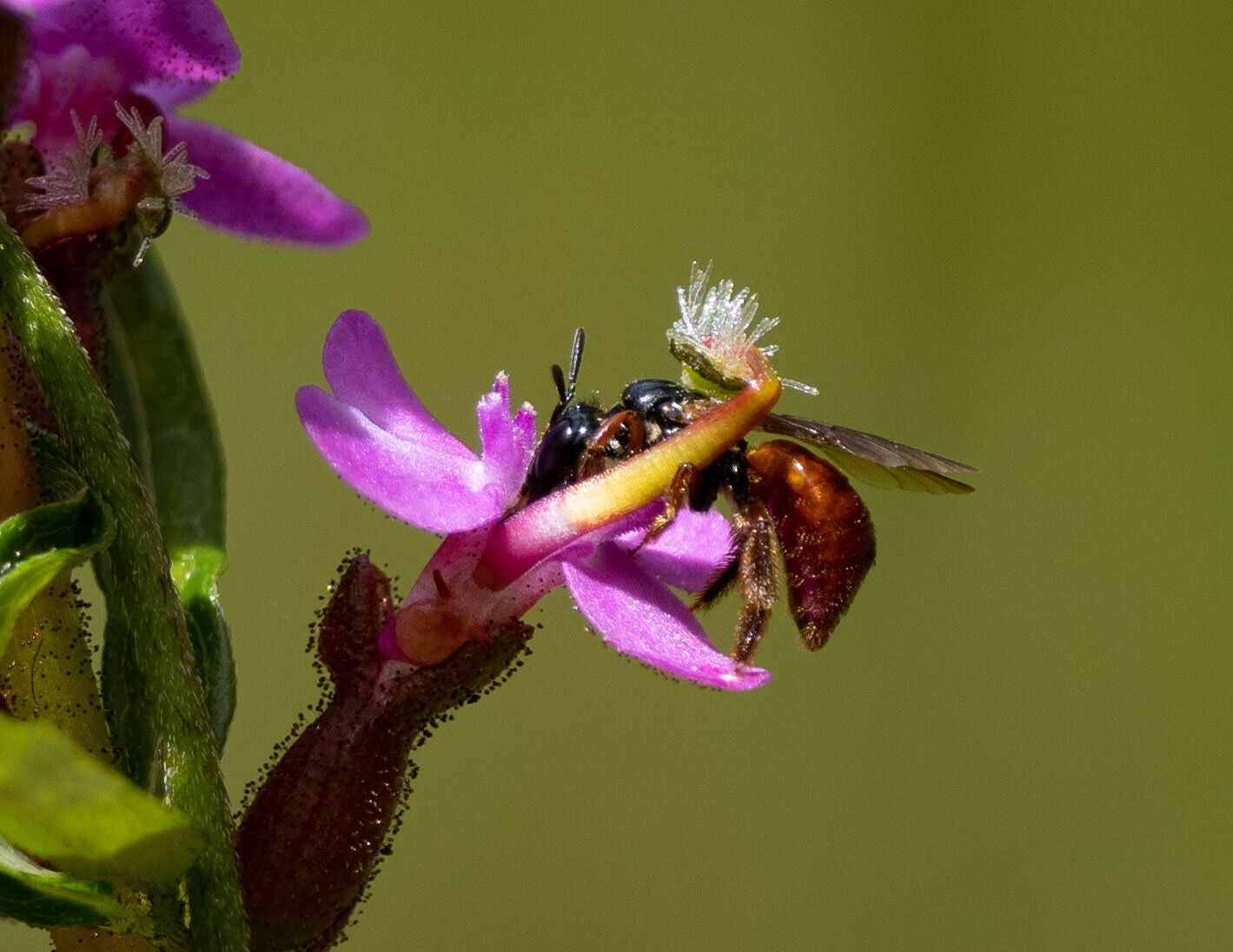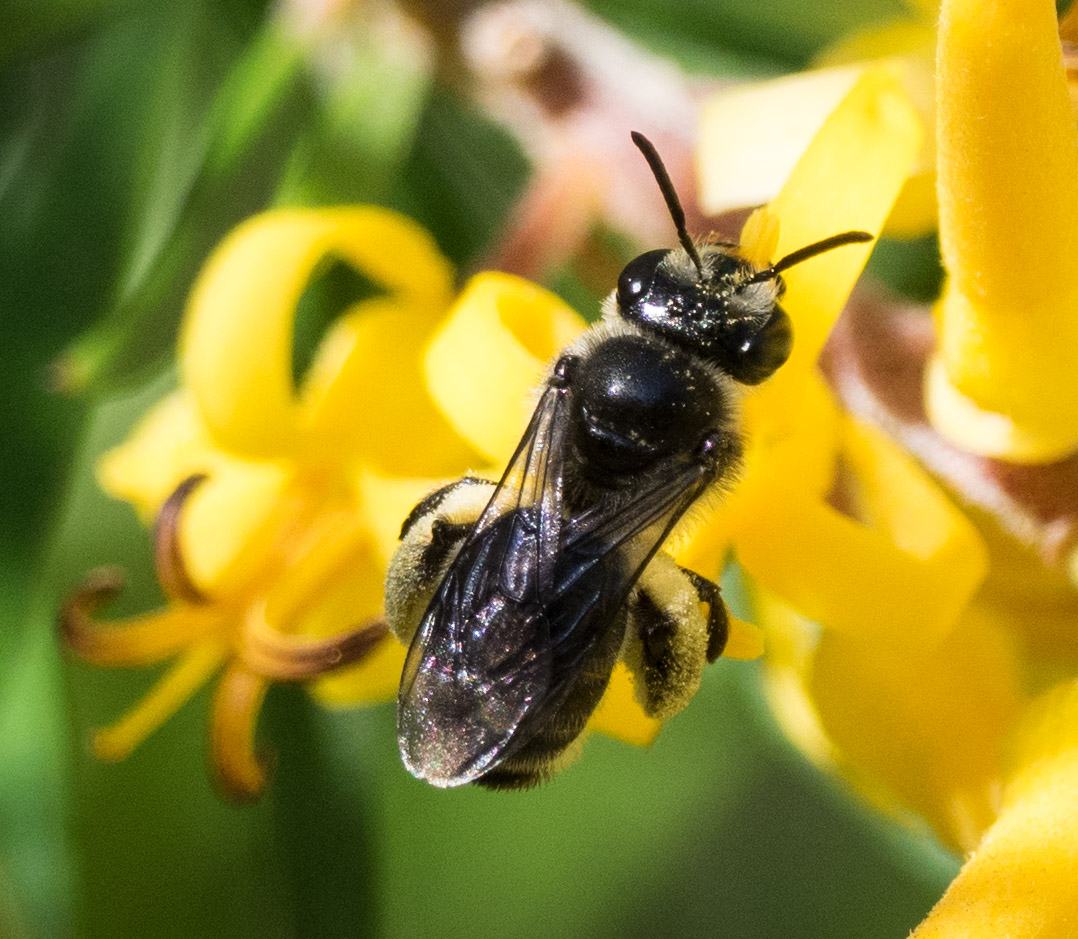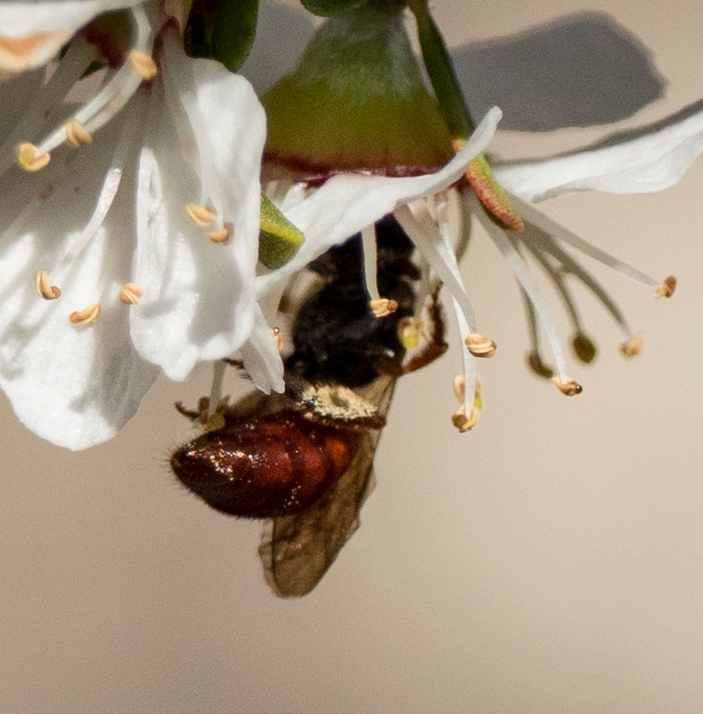A magnet for nectar feeders in Autumn
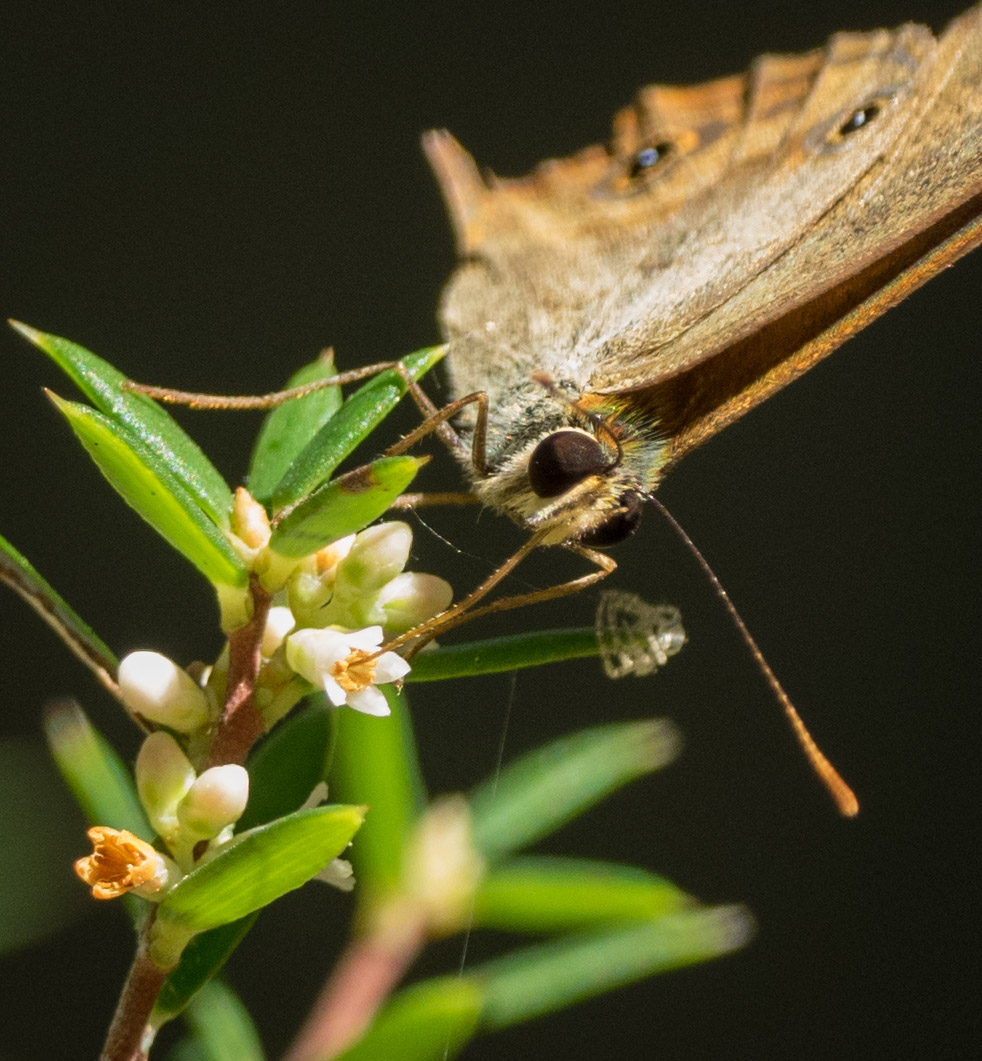
The middle of Autumn is a quiet time for flowering in the forest. Only about 10% of the 213 species of flowering plants on the block are in bloom. Furthermore, almost all of those are either nearing the end of their flowering or are only just beginning to flower. Insects and birds that depend on nectar or pollen for a food source are faced with slim pickings.
One plant represents an exception to this pattern - the Prickly Broom-heath (Monotoca scoparia), comes into full bloom in April. This is a low growing shrub with narrow, spiky leaves. Its flowers are tiny - just 1.5-3mm long.
As one of the few plants in full flower, Monotoca scoparia attracts a host of insects.
The Common Ringlet (Hypocysta metirius) thrusts its proboscis into the corolla tube to access nectar at the base of the flower.
In a separate blog, Kerri describes how these bushes become battlegrounds for male butterflies as they compete for access to feeding females.
The flowers of Monotoca scoparia are too small for honeybees, but are a perfect size for tiny Exoneura bees. They gather pollen from the anthers in the top half of the corolla tube.
Not a bee, but a Bee Fly (Geron sp.) - another insect taking advantage of the feeding opportunities at Monotoca scoparia.
In the natural garden of the forest floor this month, Tetratheca and Stackhousia are islands of calm amid a hectic sea of bees and peas. So I set out to discover more about the pollination strategies of these very different types of flowers.
An orchid lures a wasp with the promise of sex - to achieve its own reproductive needs
Triggerplants are among the speediest of plants. I take a closer look at the structure and function of their flowers.
Many different types of insects land on the convenient flat surfaces of the tea-tree flower in search of nectar and pollen
With few options available at this time of the year, insects looking for a feed of nectar or pollen seek out the tiny flowers of Prickly Broom-heath.
January marks the peak of flowering of two members of the Proteaceae that are widespread on the block - Saw Banksia and Geebung. So what is a banksia flower anyway and how does it differ from the "common garden" flower?
After watching native bees feeding on Persoonia flowers, I work my way to a better understanding of who they are and what they are doing.
Nectar and pollen attracts a wealth of insect life
Early attempts to become acquainted with the local bee fauna


